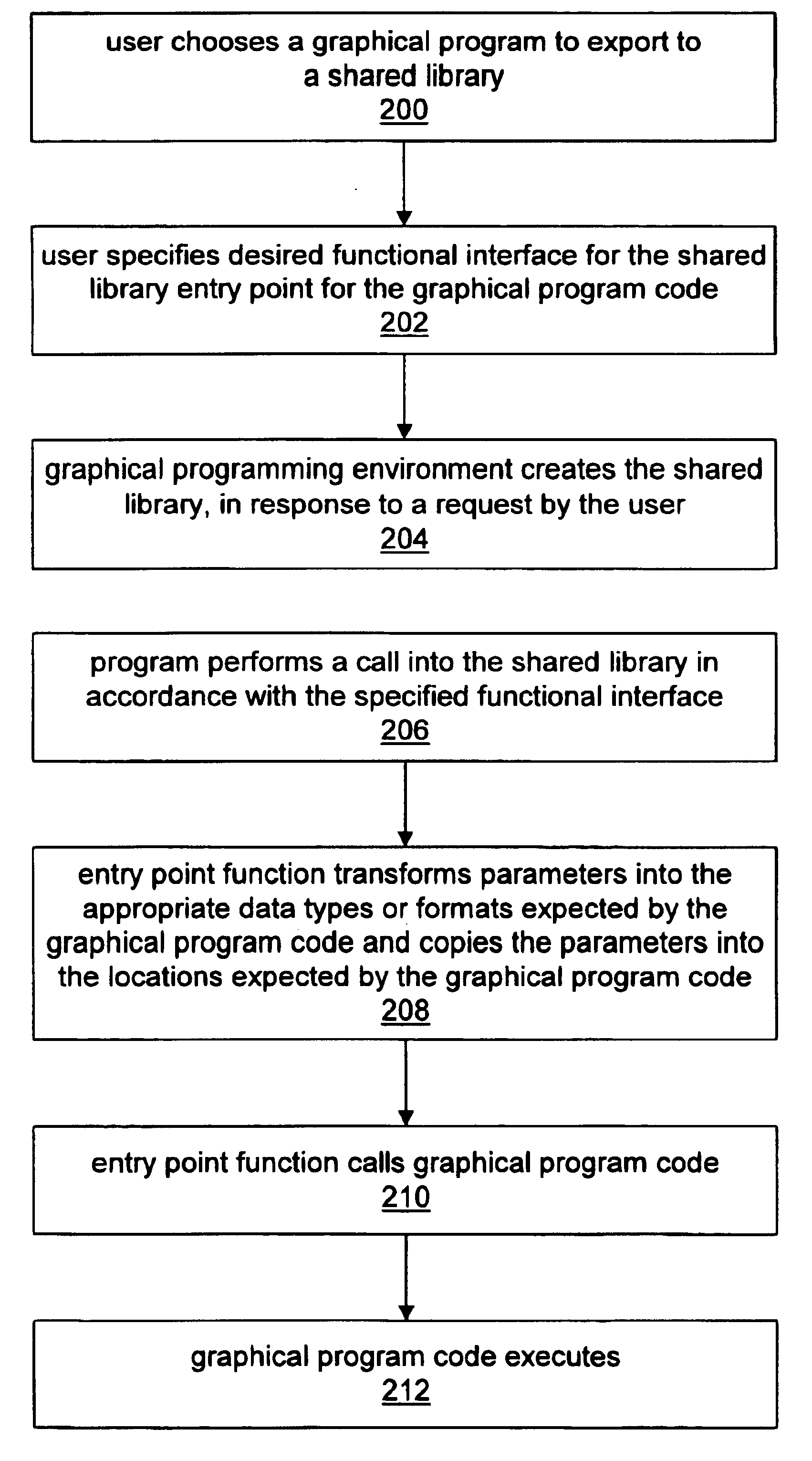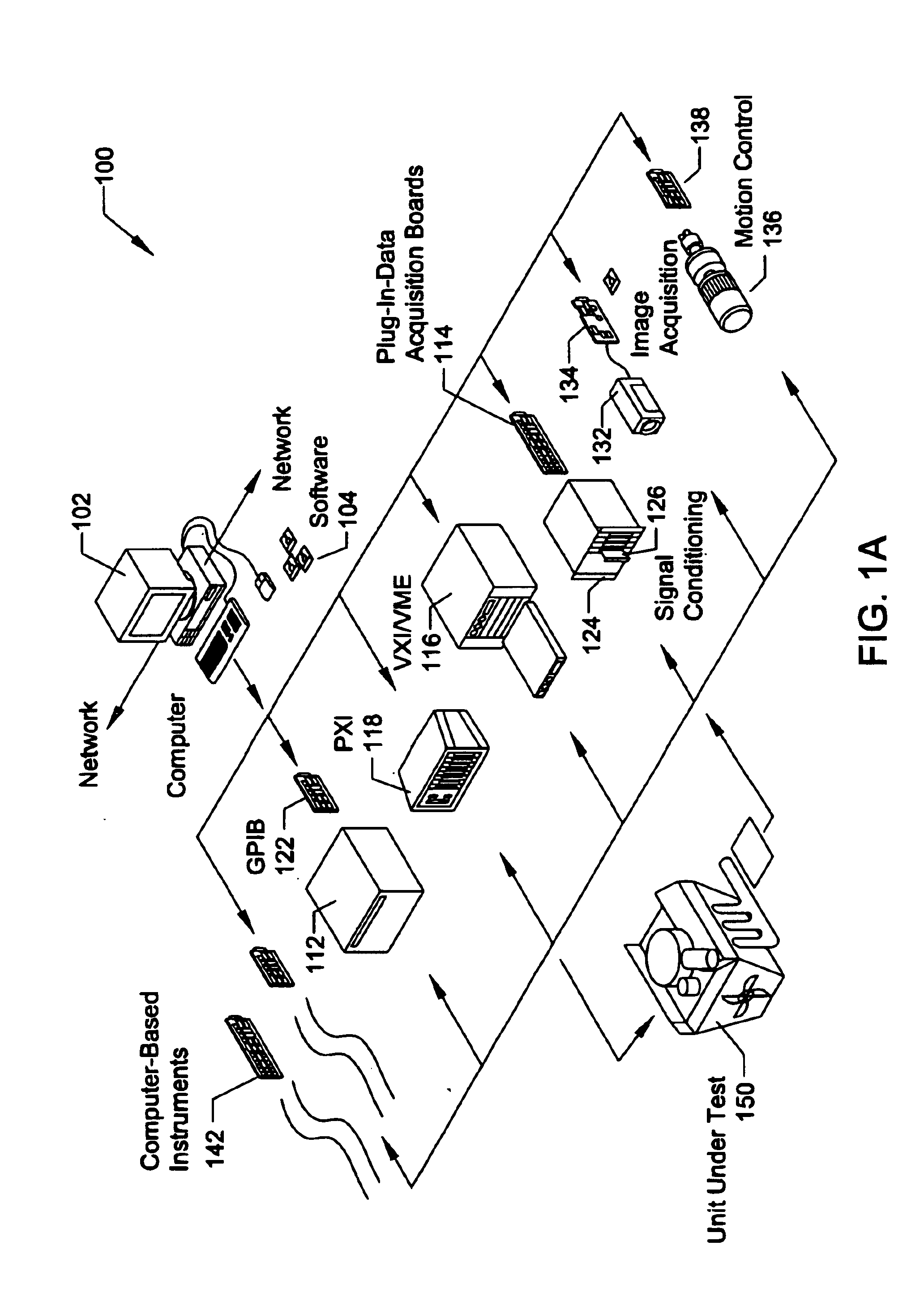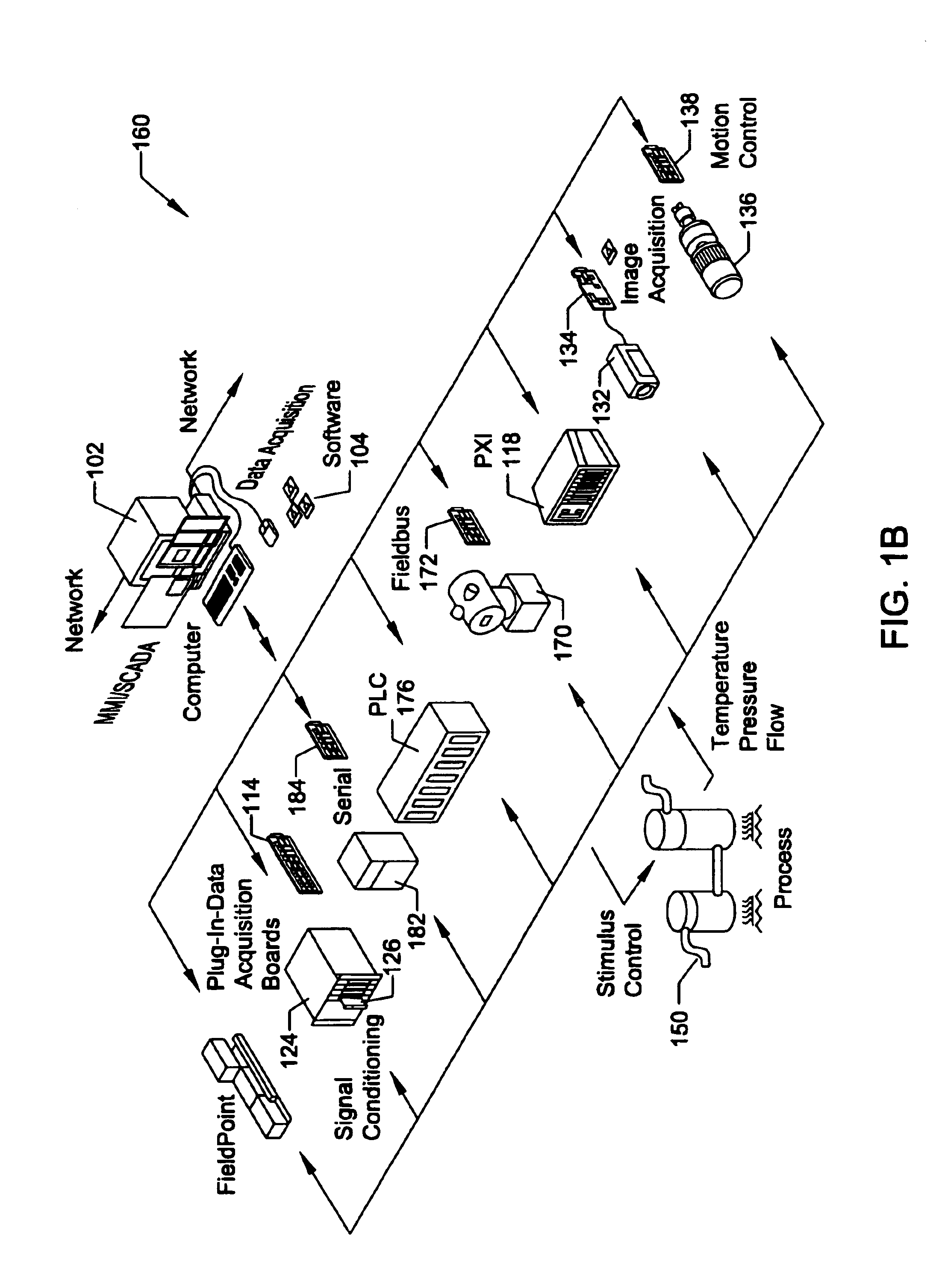System and method for exporting a graphical program to a shared library
a technology of graphical programs and shared libraries, applied in the field of graphical programming, can solve the problems of insufficient technical knowledge, complex task of programming a computer system to model or implement a process, and inability to fully grasp techniques
- Summary
- Abstract
- Description
- Claims
- Application Information
AI Technical Summary
Benefits of technology
Problems solved by technology
Method used
Image
Examples
Embodiment Construction
FIGS. 1A and 1B—Instrumentation and Industrial Automation Systems
FIGS. 1A and 1B illustrate exemplary systems that may store or execute graphical programs for instrumentation, process control, or other purposes. These programs may of course be stored in or used by other types of systems as desired. In accordance with the present system and method, code associated with the graphical programs may be included in a shared library that may be called by other programs, as described below.
FIG. 1A illustrates an instrumentation control system 100. The system 100 comprises a host computer 102 which connects to one or more instruments. The host computer 102 comprises a CPU, a display screen, memory, and one or more input devices such as a mouse or keyboard, as shown. The host computer 102 connects through the one or more instruments to analyze, measure, or control a unit under test (UUT) or process 150.
The host computer 102 may execute a graphical program which interacts with or controls the ...
PUM
 Login to View More
Login to View More Abstract
Description
Claims
Application Information
 Login to View More
Login to View More - R&D
- Intellectual Property
- Life Sciences
- Materials
- Tech Scout
- Unparalleled Data Quality
- Higher Quality Content
- 60% Fewer Hallucinations
Browse by: Latest US Patents, China's latest patents, Technical Efficacy Thesaurus, Application Domain, Technology Topic, Popular Technical Reports.
© 2025 PatSnap. All rights reserved.Legal|Privacy policy|Modern Slavery Act Transparency Statement|Sitemap|About US| Contact US: help@patsnap.com



